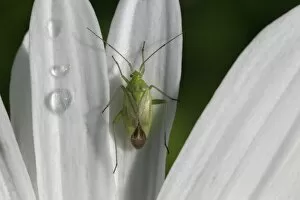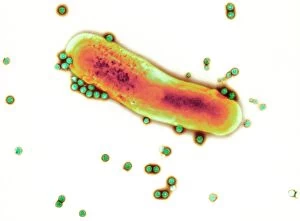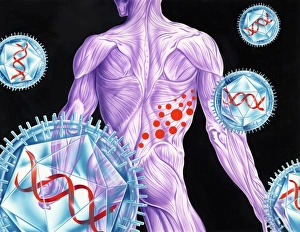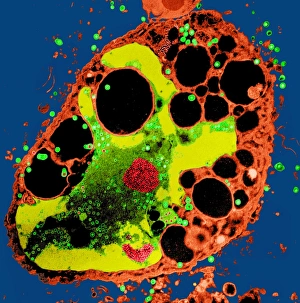Capsids Collection
Captivating Capsids: Exploring the Intricate World of Viral Structures In the enchanting realm of nature, even the tiniest creatures can hold immense fascination
All Professionally Made to Order for Quick Shipping
Captivating Capsids: Exploring the Intricate World of Viral Structures In the enchanting realm of nature, even the tiniest creatures can hold immense fascination. Meet the Common Green Capsid Bug (Lygocoris pabulinus) adult, a delicate insect that finds solace on a vibrant marguerite petal adorned with glistening raindrops after an English downpour in June. This captivating image reminds us of the intricate beauty that exists within our gardens. Zooming into a microscopic world, we encounter Adenovirus particles and bacteria through a powerful electron microscope (TEM). These minute structures astound us with their complexity, showcasing how viruses interact with bacterial hosts to survive and thrive. Similarly, Herpes simplex virus particles captivate our attention as they reveal themselves under TEM's watchful eye; their elegant shapes hint at their ability to infiltrate human cells. Delving deeper into viral intricacies, we witness HIV replication through mesmerizing computer artwork. This visual representation highlights how this notorious virus hijacks our immune system's machinery for its own reproduction—a reminder of both its destructive power and scientific intrigue. Returning to TEM imagery, Adenovirus particles once again grace our presence. Their symmetrical forms are reminiscent of tiny spaceships ready to embark on infectious journeys within living organisms. Meanwhile, Shingles—an affliction caused by reactivation of dormant chickenpox virus—serves as a somber reminder that these they are bring about discomfort and pain when unleashed upon unsuspecting individuals. As we conclude this exploration into capsids' wonders, let us marvel at their diversity and resilience—their ability to adapt and evolve throughout time is truly remarkable. From tranquil garden scenes to awe-inspiring microscopic landscapes, these images remind us that even in the smallest corners of existence lies boundless beauty waiting to be discovered.









